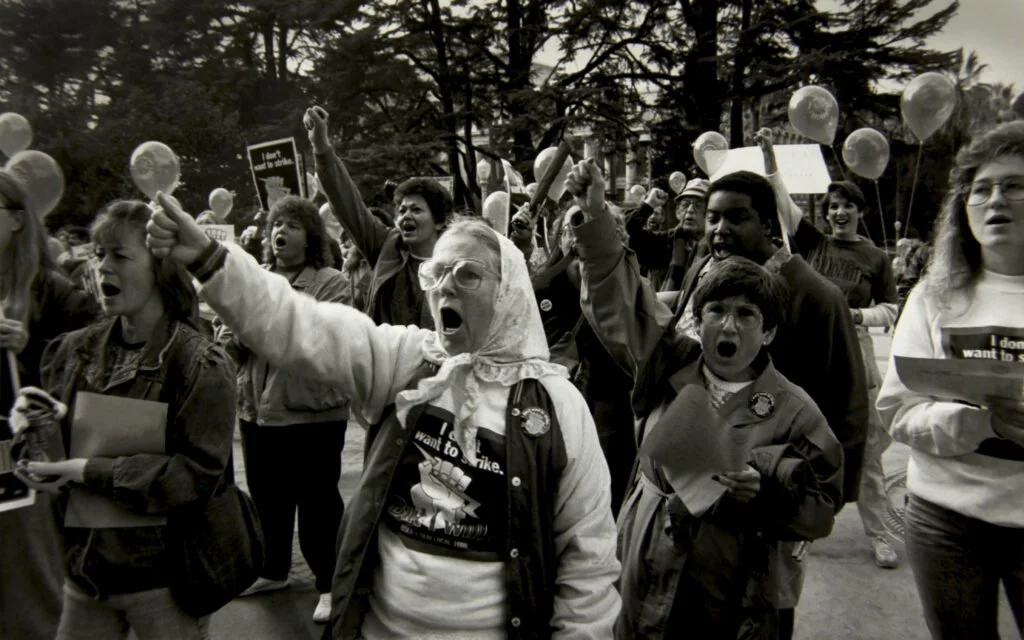Organizing in Good Times and Bad: What We Need to Get Right



“In good times, organizations wrest and secure our gains. In bad times, they help withstand the inevitable chaos from backlash, repression and sectarianism.”
When I visited Barcelona last spring, I took a guided tour about the Spanish Civil War and later told my 99-year-old father about it. Dad’s politics were those of a New Deal Democrat, so I was surprised when he showed me his copy of the latest issue of “The Volunteer,” the newsletter of the Abraham Lincoln Brigade Archive, and told me he had wanted to fight in Spain but couldn’t because he was too young—he was still in grammar school.
The upheaval of the 1930s inspired millions of people like my father. The legacy of those leftists was largely hidden from the generation of activists like me coming up in the 1960s. They were inspired by a vision of a better future rooted in class politics and anchored by strong organization and activists experienced in strategy and tactics.
How do we take advantage of the current upheaval? Two organizing efforts I’ve been part of—9to5 and the working women’s movement starting in the 1970s, and Working America over the last 20 years— have focused on building mass-based, cross-class, multi-racial organizations, and inform the way I look at our challenges today.
Coming of age with “revolution in the air”
I saw a survey when I got to college in 1968 which found that one million students in the US considered themselves revolutionaries. While I wasn’t ready to describe myself that way, I sat in, dropped out, went to Cuba on the Venceremos Brigade, came back, and cut my hair short. I got a part-time job as a clerical worker to support my full-time organizing against the war and for women’s liberation.
I participated fully in the often-chaotic anti-war movement. Decision-making meetings attended by hundreds of people who heard about it on the radio; meetings shut down over an arcane point hammered by a small faction. We lacked experience in making strategic decisions and building accountable structures.
We did our best to figure it out as we went along. A multi-layered anti-war movement did help end the war, and the energy from more than a decade of social movement organizing found new avenues. I soon realized I could organize on my job as an office worker. We started a newsletter in Boston we called “9to5” and knew we were on to something when a secretary sent this letter to the editor: “I’ll be called ‘girl’ til the day I retire without pension.”
Riding the women’s rights wave
We rode the wave of the demand for women’s rights and built a new front of the women’s movement. Clerical work was the biggest occupation for women, accounting for one out of every three jobs. Women’s opportunities were so limited that it was an advantage for organizing: working-class and middle-class women, women of color and white women worked side by side.
We reached out to women who did not identify as feminists (“I’m no women’s libber but….”), promoting the ideas of women’s equality without the vocabulary. We handed out our newsletter at subway stations and distributed surveys at big companies, sometimes leaving a stack in the women’s bathrooms. Tear off slips “for more information” poured into the office and our organizers often had three recruitment lunches a day.
Our “Bad Boss” contests illuminated outrageous behavior. Twenty or so members, along with the media, would confront the boss—like the guy who made his secretary sew up a hole in his pants while he had them on, or the boss who required his secretary to go to the local bar and beep him if she found a woman who met his specifications—and we’d be all over the 6 o’clock news. We filed charges with government agencies and sued companies, and used public pressure to boost the campaigns.
In Boston alone we won millions of dollars in better pay and promotions in companies such as Houghton Mifflin, New England Merchants Bank and First National Bank, and Liberty Mutual and John Hancock insurance companies. (Years later, I was on a panel with a John Hancock executive who had been the personnel director when we targeted the company. He told me he had stayed in his office the night before the campaign kick-off. I’m not sure how he thought this would protect them.)
Our members gained skills running meetings, organizing events and making speeches. We gave women experiences fighting together, pairing Black, brown and white women, working-class and middle-class, old and young as committee co-chairs and speakers at events. We inspired Jane Fonda to make the movie “9 to 5” .which exploded the public debate, doubled the number of our chapters and generated 100,000 inquiries to a TV PSA featuring Fonda.
At the same time we built an institutional home with bargaining power in our sister union, SEIU 925. 9to5 members who organized for change in their workplace would come up against the intransigence of their employers and conclude they needed the power of a union to force them to bargain. Other women came to us through our hotline, leading to successful campaigns in universities, publishing houses, insurance companies and more.
But we got crushed in the mid-1980s and ’90s.We didn’t recognize the growing power of the right wing, promoted by Nixon and cemented by Reagan. Globalization and new technology were the background for a new wave of union-busting, a backlash against the women’s movement and a continued assault on people of color.

